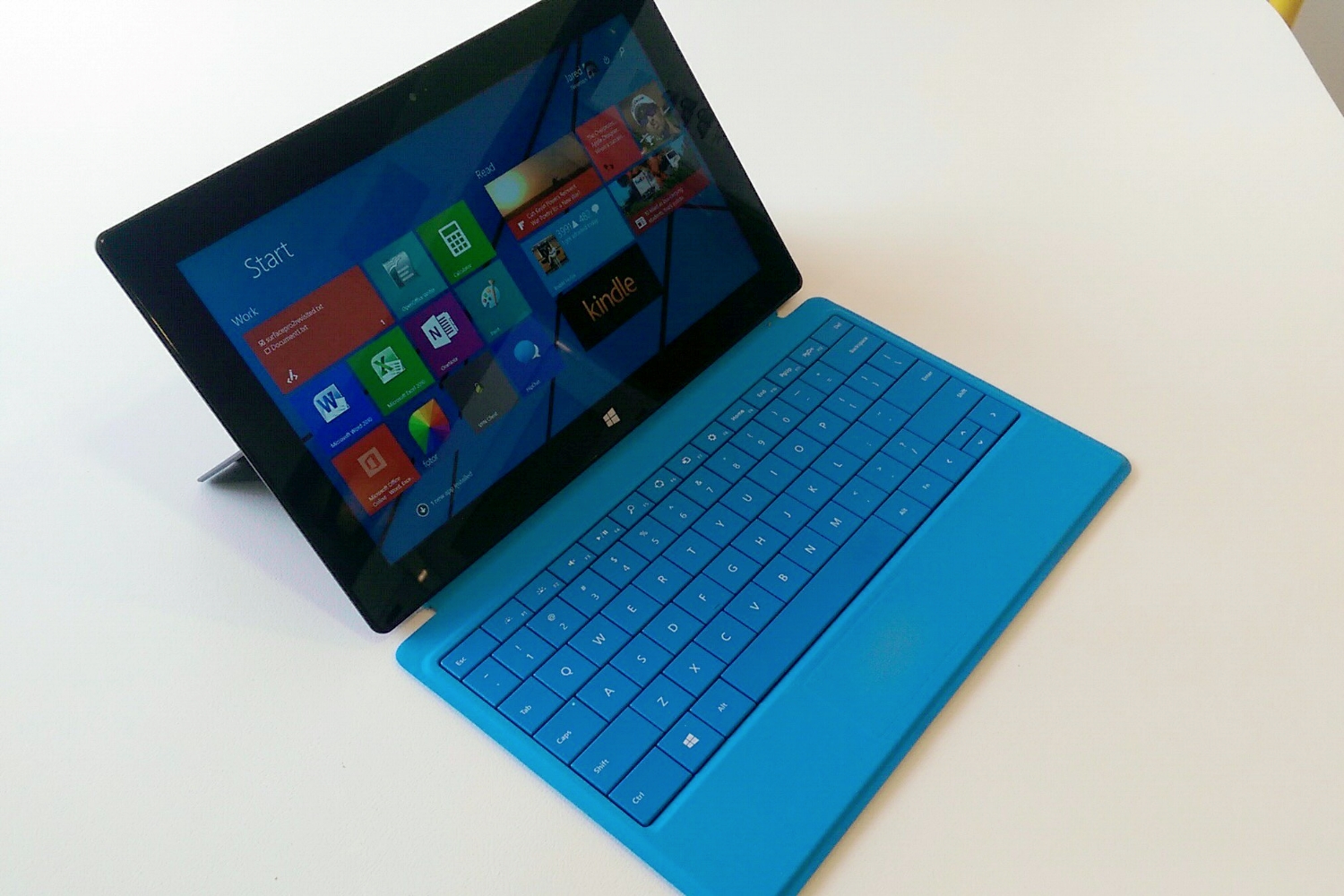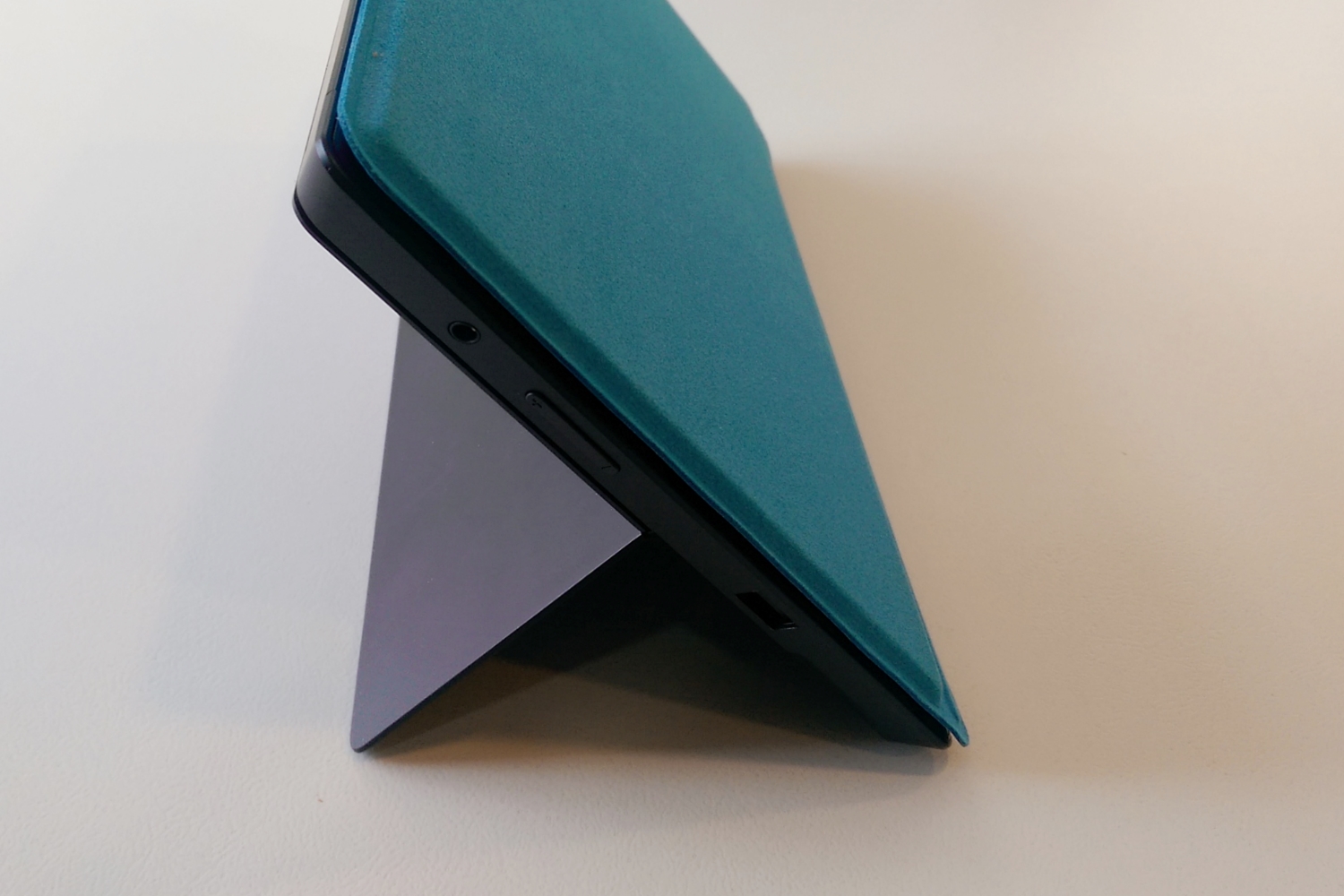
When Microsoft’s Surface Pro 2 arrived last October, I was among the first to get one, heading out to a nearby Microsoft Store on launch day to claim my pre-order. I’d been waiting a long time for a 2-in-1 device that was powerful enough as a laptop, comfortable enough to use as a tablet and still lighter than my other laptops. The Surface Pro 2 seemed to fit the bill, though it was more expensive than what I’d originally hoped to pay.
My impressions were mostly positive after 30 days with the Surface Pro 2, but I did have some issues, particularly with the software. Now that six months have passed, and Microsoft has released a major update for Windows 8.1, I’m ready to re-evaluate:
Still Digging the Hybrid
Read enough Surface Pro 2 reviews, and you might internalize this refrain: It’s too heavy as a tablet, and too awkward as a laptop. It’s an understandable complaint. The Surface Pro 2 is trickier to balance on your knees, and its 2-pound frame isn’t comfortable enough to hold up with one hand. You must also get used to the idea that the Surface is foremost a device that you use in landscape mode.
But by forcing the Surface into those molds overlooks the ways that the hardware excels. The integrated kickstand lets you use the tablet while laying in bed, without holding it up with your hands or strapping on a separate stand, and you can even fold the keyboard underneath for added stability. Compared to larger touchscreen laptops, the Surface’s compact size is easier to use on an airplane tray table, and when it’s in your lap, you don’t have to reach as far to touch the screen. The Surface Pro 2’s design has a lot to offer, but only if you can get beyond the preconceived notions of what a tablet or laptop should do.
Unexpected Annoyance: Booting Up
Some Windows devices offer “Connected Standby,” which lets them stay on Wi-Fi while sleeping and pull in updates from the Internet, but the Surface Pro 2 isn’t one of them. I didn’t think I’d be too inconvenienced by the few seconds it takes to wake the Surface from a sleep state, but as the months have passed, it has become a mental barrier when I’m reaching for a computing device. Those extra seconds, plus the time it takes to reestablish a Wi-Fi connection and reconnect to all my Internet services, are just enough for me to reach for my smartphone or another tablet for quick hits of e-mail or Twitter, saving the Surface for more intensive tasks.
The Trackpad Is No Longer Awful
It’s funny how the mind works. Before Microsoft added double tap-and-drag support to the Type Cover 2 and Touch Cover 2 last week, I’d start feeling annoyed before I even tried to drag and drop anything. Almost every time, I’d run into problems while trying to hold down the trackpad’s tiny button with one hand, and drag my finger around with the other. My frustration was so hard-wired that it’s taken me a few days to stop dreading every text selection or drag-and-drop operation. But it’s much better now.
Not all is right with the Type Cover 2, however. Responsiveness to two-finger scrolling is still widly inconsistent from one app to the next, and there’s still a dead zone as you scroll your fingers down from the top of the trackpad, taking away from what is already a small surface to work with. I use the touchscreen more often than I expected, but not always because I want to.
Windows 8.1 Still Feels Unpolished (and It’s Not Always Microsoft’s Fault)
Windows in its current state is a vast improvement over the version that shipped in 2012, but it’s still not living up to its potential. Partly, that’s because of third-party Windows Store apps. The selection of high-quality apps is too small, and the ones that do exist aren’t always up to par with other platforms (ahem, MLB.tv). And I’m sorely missing a Windows Store version of HipChat, which, if it existed, would probably let me cut out the desktop completely in my daily work routine.
The operating system itself also introduces its own problems. On some occasions, a chunk of battery life has vanished for reasons unclear. And when I’m watching a video on the desktop, Windows doesn’t seem to understand that it should stay awake, which means I can’t use Chromecast without switching to a separate power profile that never sleeps. If I do that, I have to make sure to switch back when I’m finished watching. I shouldn’t have to think about it at all.
Oh, and Google Chrome is still atrocious on the Surface. Proper support for the tablet’s high-pixel density display is absent, and one update earlier this year actually stopped the Type Cover 2 from scrolling properly.
Feeling Conflicted About a More Windowed Windows
One of the major new features in the Windows 8.1 update is the ability to display Windows Store apps on the taskbar. With this option enabled, the taskbar doesn’t stay confined to the desktop. It actually pops up on the Start screen and inside Windows Store apps when you move the cursor to the bottom of the screen.
I understand that this is one more step toward letting people stay out of the new interface entirely, while still letting them enjoy new kinds of Windows apps. This plan will be complete later this year, with the restoration of the Start menu and a windowing system for apps. But it also feels like a retreat from having the desktop as just one app among many — something you’d fall back to when modern apps weren’t enough. As polarizing as that idea was, I liked it.
For now, these new features can be disabled, and maybe it’ll stay that way, but that’s beside the point. Having all these options adds complexity to a system that should be getting simpler. Do I launch Twitter through the taskbar on the bottom, or the recent apps list on the right? There’s no good reason for me to have to make that decision.
My Wife May Have Fallen for the Novelty

I previously wrote that my wife was smitten with the Surface Pro 2. But over the last few months, the things I’ve mentioned here have added up. She gets annoyed by the erratic behavior of Chrome, the dinky trackpad, the occasional bugs and the smallness of desktop elements on the screen. She’s less receptive to Windows Store apps than I am, so her attempts at using touch on the desktop have led to frustration. It’s a hassle to keep finding the stylus, because the Surface Pro 2 offers no place to store it while the charging cable is plugged in. She still uses the Surface for Office, and enjoys whipping together flyers in Publisher with the touchscreen, but for basic e-mail and Calendar tasks, she often reaches for our Chromebook instead.
It Still Has Its Magic Moments
Despite these criticisms, I don’t regret the purchase. The Surface Pro 2 still serves the purpose I had in mind from the start: It’s powerful and capable enough for my work (and even for some PC gaming), but lets me switch into consumption mode without pulling out a separate device. Those times when I’m moving back and forth — for instance, to slack off on Twitter between spurts of writing — are when it all clicks.
More Must-Reads from TIME
- Introducing the 2024 TIME100 Next
- The Reinvention of J.D. Vance
- How to Survive Election Season Without Losing Your Mind
- Welcome to the Golden Age of Scams
- Did the Pandemic Break Our Brains?
- The Many Lives of Jack Antonoff
- 33 True Crime Documentaries That Shaped the Genre
- Why Gut Health Issues Are More Common in Women
Contact us at letters@time.com